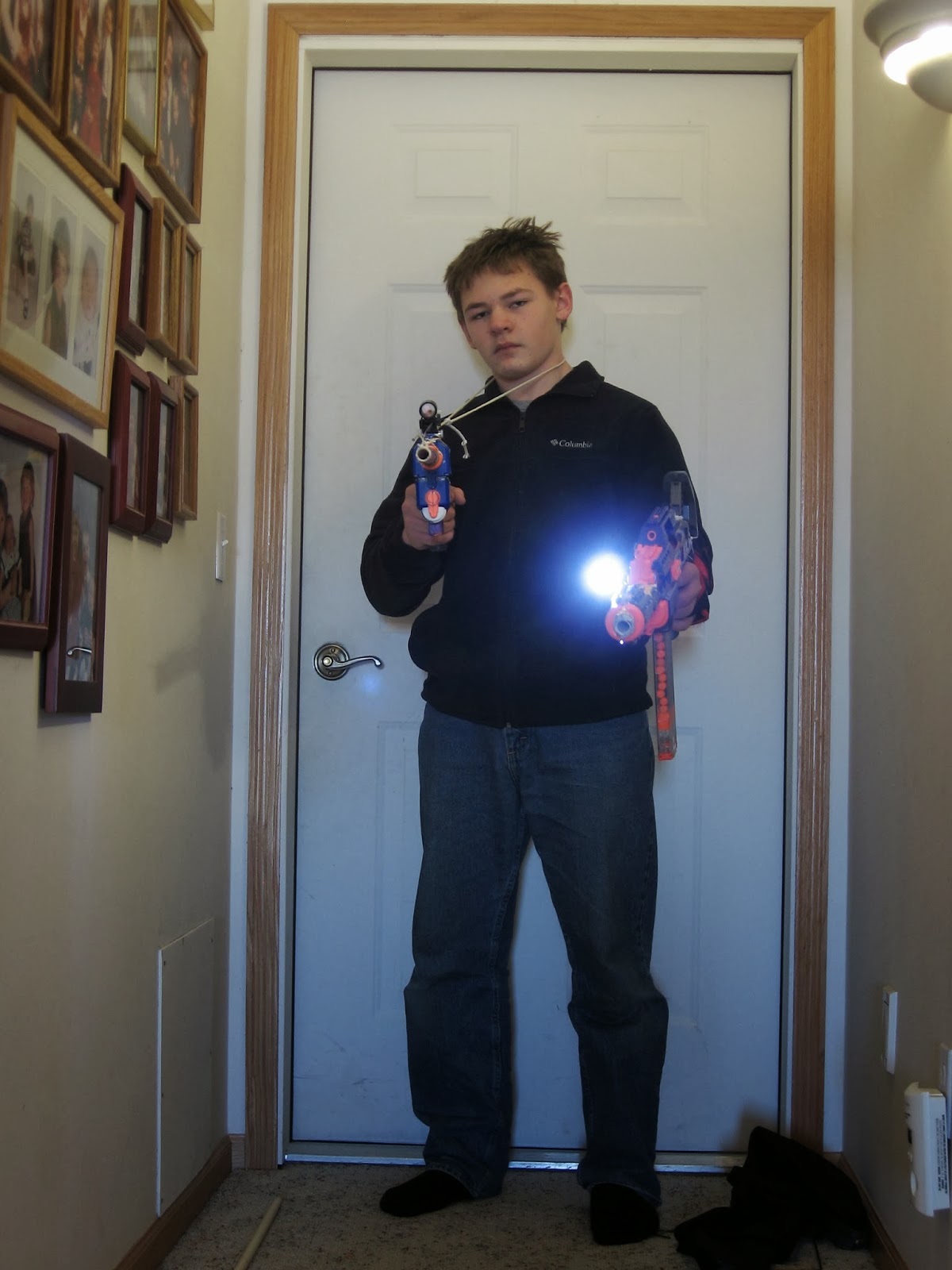I'm starting a new project, and I'm probably alone in my work, but any collaboration would be greatly appreciated. Odds are, I won't have any help anyway. But it's worth a shot, right?
On to the new idea. What if there was a new class of blaster and competition, one where people were required to wear clothing that leaves no skin exposed? It would only be natural, as these battles would only take place in the wintertime. With gear covering everything, darts can hit a lot harder, and therefore fly faster, and instantly the game becomes exponentially more intense.
Winter Soldier class blasters would fire weighted darts, flying at up to 200 fps. The darts would be very rigid in structure, having a hard enamel on the surface of the foam, except for about half an inch at the tail, which would seal in 1/2" PVC, PETG, or brass.
Getting the blasters up to that power level will take some heavy engineering and application. There are a number of approaches:
- Flywheel
- electric
- brushed
- brushless
- hydraulic impeller
- liquid nitrogen
- dry ice
- compressed air
- water
- other hydraulic fluid
- Plunger
- PVC breech
- PETG/Brass breech
- favorable technology, as it has been developed very well by the NIC. Thanks, guys. The world owes you one.
- Compression-ignition charge
- Diesel engines don't need spark plugs because the fuel ignites by the heat from the sudden compression in the cylinder. This concept could also be applied to a plunger firing darts.
- In model rockets, a small charge fires into the fuselage of the rocket from the top of the engine, popping out a streamer or parachute, called a recovery system. To keep the recovery material from being damaged by the heat from the charge, flame-retardant paper is wadded up and put between the charge and recovery system.
- The entire plunger and breech would have to be metal, and the dart foam would have to have flame retardant compounds in it.
- Triggered Blast Valve
- No longer in any blaster on the shelves, this is a very high-quality piece of technology. This type of valve is found in some drink dispensers and in BuzzBee rocket launchers. I will pay a fortune for a couple of those blasters.
- Now, in all the BuzzBee Extreme blasters, there is a very similar device, although the main release valve is actuated by releasing the air from a secondary chamber. With the pressure limit safety removed and the chamber pressure higher, the valve in the secondary chamber requires too much force to actuate, and the shell can't withstand that force. The blaster has to be disassembled in order to release the chamber pressure.
- The chamber can be charged by a few methods:
- hand pump
- dry ice
- liquid nitrogen
- science-fair-style vinegar and baking soda (not really though, that doesn't work)
- carbonated drink (you can get a shot or two out of an 8oz bottle of soda, but the pressure is pretty weak)
The Pinpoint worked by means of a triggered blast valve. It was made out of a BuzzBee Berserker. These days, those are hard to get my hands on. Hydraulic flywheels could be very effective, but those things still have to spin up to some extremely lofty speeds.
The Winter Soldier idea is defined by the changes to the rules and safety limits. Normally, you are "out" if you are touched by a soft Nerf object or other brand of dart and you do not catch it. This rule is made to be compatible with Nerf sports items. In Winter Soldier competition, the rule would not include the catching bit, and the sports items would not be included. The other new rule is that
This could turn out to be very exhilarating and intense. Too bad it won't work in Singapore or Brisbane. It does require cold weather. But any support on developing these high-power blasters, or information about existing developments in this area.
Comments are greatly appreciated :)
N-Strike Epic















